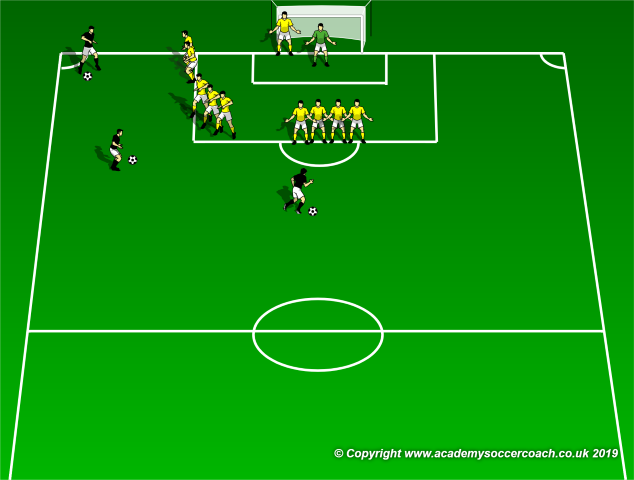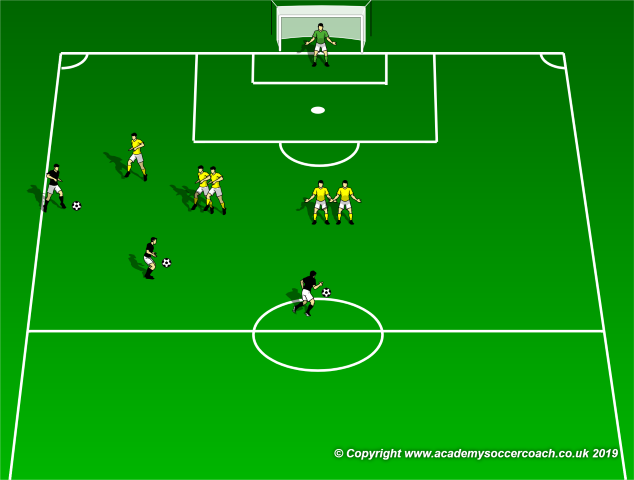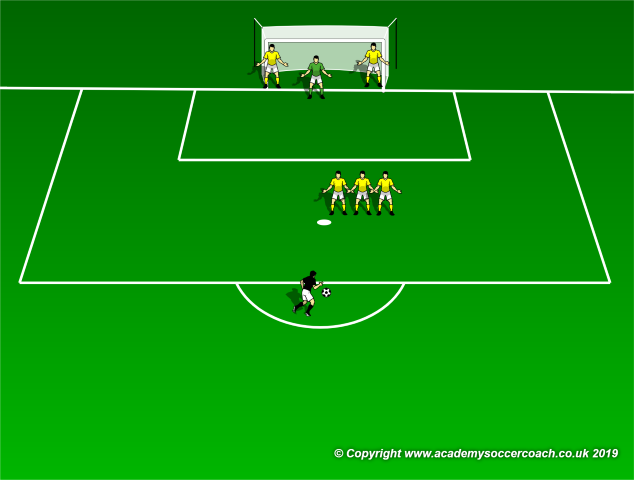By Mike Smith
Question - Is there a chart for how many players to put in a wall based on where the free kick is and/or how far the free kick is from goal?
I couldn’t have asked this better myself, and this is both a very common question and point of debate. The simple answer is “ YES”, there is a general guideline on how many players should be in the wall based on the location of the free kick, here is mine below plus a diagram:


BASICALLY, the 4 center, 3 angled, 2 end line progression will work for anything around the top of the box to perhaps 25 yds out. As a general rule, an additional player can be added or subtracted based on the specifics of the situation – a poor shooter vs a good shooter; a team which servers the kicks in to be finished instead of shooting ( this would require more players marking runners than standing in the wall ).
Notice I also placed a player on the post in the net. Common on corners, I also like to have a player marking the post on the side opposite the keeper. This player can always step out and play defense and is only really a disadvantage if you are choosing to attempt an offsides trap to counter the kick. This is the progression I use if I feel the player taking the kick is going to shoot. For kicks from 30-50 yds out I use this progression:

For a straight on shot from deep, I usually have my forwards screen the kicker and just try to throw off the shot to one side or the other. As the angle increases, I just want to make sure the ball is actually going on a predictable track in and not able to exploit the near post. For the farthest angles ( as shown ) this can be achieved with a one player wall. Obviously this deep there is no need for a post player.
I never build a wall in the opposing teams end.
There are always exceptions – one notable one is shown below:

Occasionally I will have a keeper who likes to see the ball. In this case, I remove a player from the wall, making sure the remaining players are in the natural shooting lane of the opposing player. Hopefully this will force the shooting player to change their shot while also giving your keeper a better reaction to the ball. I have only done this regularly for 2 keepers in my 20 + year career, so again, an exception, but for the right keeper a worth while adjustment.
The best way to find out what works best for your squad,( and identify good set piece strikers), is to just practice. Use the diagrams above as a guide and spend an hour, or an entire “ light” practice identifying which type of wall and where works best for your team, and your keeper. Be sure to mix in kicks which are shot directly from the spot AND served in to a runner or passed out to another shooter/server. Defending set pieces is an important step in the overall success of the team, I hope this helps. Good luck!
By Mike Smith
Currently the Head Coach for University Heights Academy Boys Soccer in Hopkinsville, KY , Mike is in his 14th year as a high school head coach with 23 years coaching experience overall and 34 year as a student and fan of the game. He holds a USSF D License.


